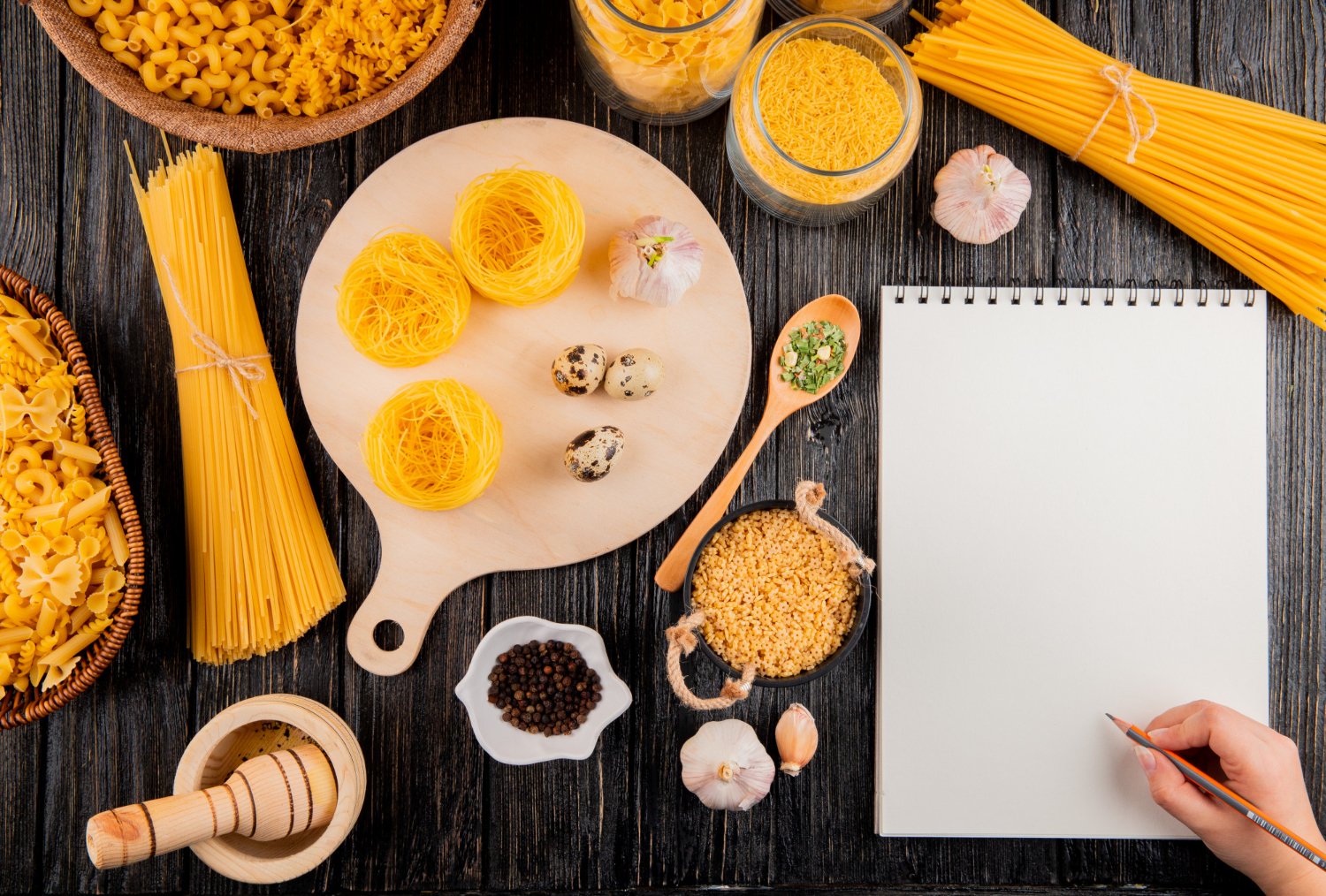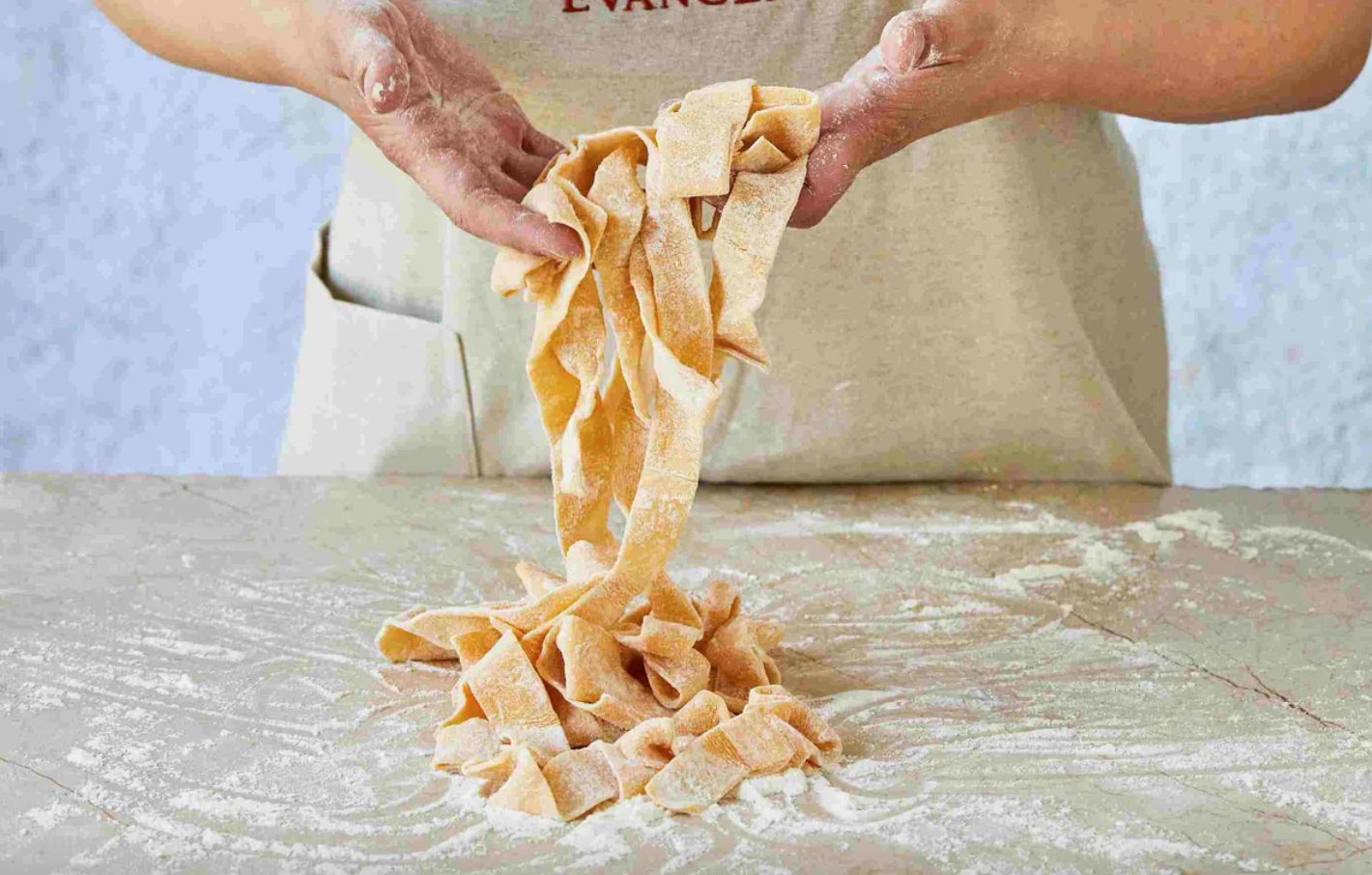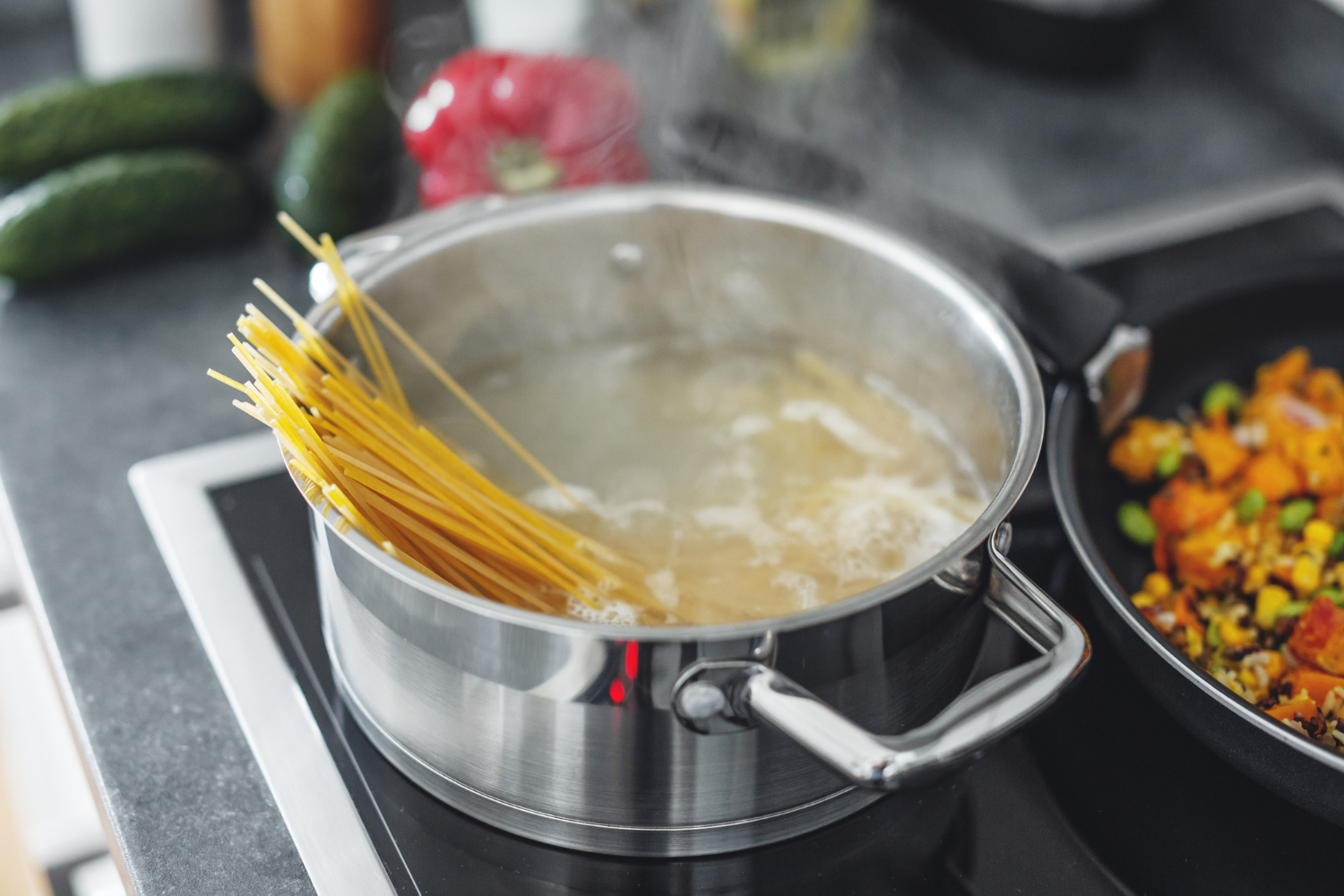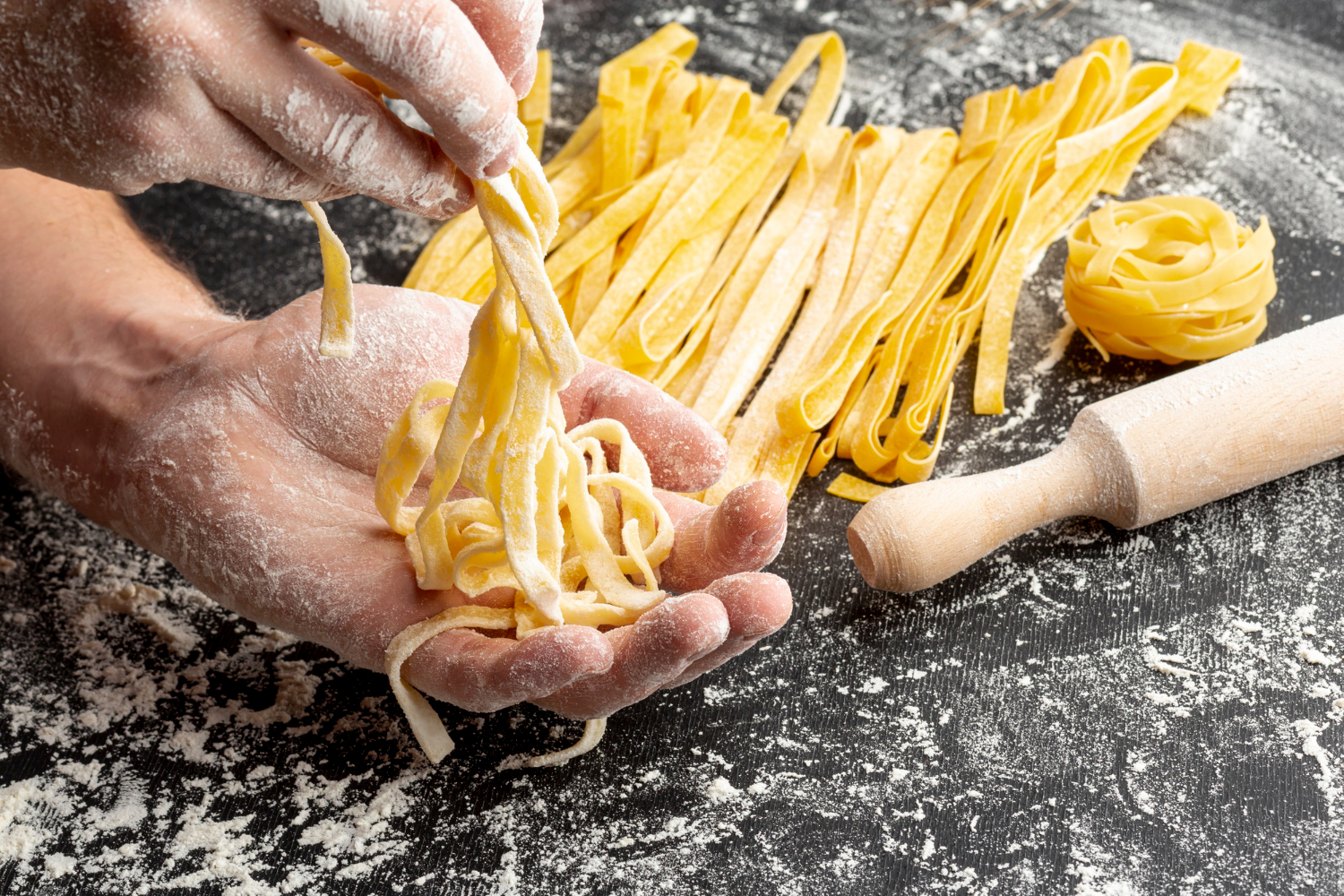Are you craving a delicious bowl of fresh pasta? Cooking pasta with the perfect texture can make all the difference in creating a mouthwatering dish. If you’re wondering how long to boil fresh pasta, you’ve come to the right place. We’ll walk you through the essential steps and provide expert tips to ensure your pasta is always cooked perfectly.
Even though boiling fresh pasta may seem simple, achieving that ideal al dente texture requires precision. Overcooking can result in a mushy mess while undercooking can leave you with an unpleasantly chewy texture. If you follow the correct cooking time, you’ll have tender pasta that is firm enough to hold its shape.
We will also discuss the factors that affect the cooking time for fresh pasta, such as its type and thickness. So, let’s dive in and discover the secrets to perfectly cooked fresh pasta!
How Long to Boil Fresh Pasta by Thickness

Image by Freepik
Depending on the type and thickness, fresh pasta can take different amounts of time to cook. To get the perfect texture, you’ll need to know the right time to cook each type of pasta. Let’s take a look at some fresh pasta categories:
1. Thin and Delicate Pasta
Thin and delicate pasta, such as angel hair or Capellini, cooks quickly due to its fine texture. These delicate strands only require a short cooking time to reach the desired doneness. How long to boil fresh pasta like thin and delicate pasta? Usually, these can be boiled for 1-2 minutes. It’s important to watch them closely when cooking because they can easily overcook and become mushy.
2. Medium-Thick Pasta
Medium-thick pasta varieties, like Fettuccine or tagliatelle, have more substance and require a slightly longer cooking time. For the perfect al dente texture, boil medium-thick pasta for approximately 3-4 minutes. In this manner, the pasta will cook while maintaining a satisfying bite.
3. Thick and Hearty Pasta
How long to boil fresh pasta like Pappardelle and lasagna sheets?These are thick and hearty pasta that requires a longer boiling time to ensure that they are fully cooked. As a result of their thickness, these varieties of pasta need to be boiled for approximately five to six minutes. They will become tender and retain their shape by cooking them for a long time.
Please remember that these cooking times are just guidelines. Following the instructions on the specific pasta brand’s package is essential. Personal preference also plays a role, so you can adjust the cooking time slightly based on your preference.
Tips for Cooking Fresh Pasta

Image by Freepik
Cooking fresh pasta requires attention to detail to ensure it turns out perfectly every time. We have compiled some helpful tips for cooking three popular types of pasta: Capellini, Fettuccine, and Pappardelle. And they are:
1. Capellini Pasta

Image by Pasta Evangelists
The capellini pasta, called angel hair pasta, is exceptionally thin and delicate. It cooks quickly and requires careful monitoring to avoid overcooking and clumping.
- Tips for Cooking Capellini Pasta
- Use a large pot and plenty of water: Capellini pasta sticks together, so a big pot with plenty of water will keep it from clumping. Use at least 5 quarts of water per pound of pasta.
- Add salt to the boiling water: Salting the water is essential to enhance pasta flavor. You should use about 1-2 tablespoons of salt per 5 quarts of water.
- Gently stir the pasta when adding it to the boiling water: Stir the pasta gently as soon as you add it to the boiling water to prevent it from sticking together. Don’t forget to stir occasionally while it’s cooking.
- Begin testing for doneness at the 1-minute mark: Capellini cooks fast, so check the doneness after just one minute. You should cook pasta until it is tender but still has a slight bite, referred to as al dente.
- Remove the pasta from the boiling water promptly: As soon as the Capellini reaches the desired texture, remove it from the boiling water with tongs or a slotted spoon. To drain excess water, transfer it to a colander and shake gently.
2. Fettuccine Pasta

Image by Pasta Evangelists
Fettuccine is a medium-thick pasta that provides a satisfying bite. Cooking fresh pasta like this requires a slightly longer cooking time than thin pasta.
- Tips for Cooking Fettuccine
- Use a wide pot and ensure there is enough water: Fettuccine requires ample space to cook evenly, so use a pot large enough for the pasta to move freely. You should use at least 4-6 quarts of water per pound of pasta.
- Stir gently to prevent sticking: Stir the Fettuccine gently before adding it to the boiling water to prevent it from sticking. Stir occasionally during cooking to prevent it from sticking.
- Test for doneness around the 3-minute mark: Fresh Fettuccine cooks faster than dried pasta, so check for doneness around 3 minutes. You should cook pasta until it is al dente, with a hint of firmness in the center.
- Monitor the pasta closely to avoid overcooking: Keep a close eye on the Fettuccine while it cooks. A few extra seconds can make a significant difference in the texture of fresh pasta. Rather than overcooking pasta, it’s better to undercook it slightly.
- Drain promptly to prevent overcooking: Drain the Fettuccine immediately after it reaches the desired texture. Use a colander and shake gently to remove excess water.
3. Pappardelle Pasta

Image by Pasta Evangelists
Pappardelle pasta is a thick, hearty pasta with a wide shape that pairs well with robust sauces. When cooking fresh pasta like this, if you want the desired texture, you must cook it longer.
- Tips for Cooking Pappardelle
- Use a wide pot to prevent sticking: Pappardelle noodles are wider than other pasta varieties, so use a wide pot to prevent them from sticking. Use at least 6-8 quarts of water per pound of pasta.
- Stir gently upon adding to boiling water: Stir gently with a fork or pasta tool when adding Pappardelle to boiling water. It will prevent them from clumping.
- Cook for 5-6 minutes until al dente: Pappardelle takes longer to cook than thinner pasta. Cook it for 5-6 minutes until it reaches al dente texture. The pasta should be cooked through but maintain a slight firmness in the center.
- Taste to ensure it’s cooked through but still firm: Taste a strand of pasta to determine its doneness. You want it to be cooked through and still have a pleasing chewiness.
- Drain carefully to preserve shape and texture: After the Pappardelle is cooked to perfection, drain it carefully to keep its shape and texture. Avoid rinsing pasta with water, which may remove the starch that helps sauces adhere to the noodles. Instead, use a colander.
Please remember that these tips are intended to serve as general guidelines. Additionally, you can alter the cooking time slightly according to your preferences.
Factors Affecting the Cooking Time of Pasta

Image by Freepik
Several factors can affect the cooking time of pasta. When you understand these factors, you can cook pasta perfectly every time. The following factors can influence the cooking time:
- The Freshness of the Pasta: The freshness of the pasta plays a significant role in its cooking time. In general, fresh pasta cooks faster than dried pasta. It takes less time for fresh pasta to reach a desired texture since it retains more moisture. In contrast, dried pasta takes longer to cook because it needs to absorb more water.
- Thickness and Shape: The thickness and shape of the pasta also affect the cooking time. Thinner and more delicate pasta, such as angel hair or Capellini, cooks faster than thicker varieties like Fettuccine or Pappardelle. In addition, shorter and smaller shapes of pasta cook faster than longer or larger shapes due to their ability to absorb heat.
- Altitude and Environmental Conditions: The altitude and environmental conditions can affect the boiling point of water, thereby affecting pasta cooking time. Water boils at a lower temperature at higher altitudes, resulting in longer cooking times. Similarly, extremely humid or dry climates can affect the moisture content of pasta and alter its cooking time.
- Personal Preference: Personal preference plays a crucial role in determining pasta cooking time. Typically, the recommended cooking time on the package instructions is an excellent place to start. Some people like pasta cooked al dente, which retains a bit of firmness, while others prefer it more tender. Adjust the cooking time accordingly if you want a particular texture or taste.
Considering these factors, you can fine-tune your pasta’s cooking time for the perfect texture and flavor. Using experience and experimentation, you can determine the ideal cooking time for you.
FAQs
How long should I boil penne pasta?
How long should I boil spaghetti?
Image by Freepik
Incorporating a reliable timer can be helpful when cooking pasta if you want precise timing. The Alarmy app can help you with this. The Alarmy app is mainly known as an alarm clock, but its features aren’t just for waking up.
With Alarmy’s timer functionality, you can conveniently set a timer to ensure your pasta is cooked perfectly.
The Takeaway
Precision timing and attention to detail are the keys to perfect fresh pasta cooking. With the proper knowledge and techniques, you can quickly cook pasta perfectly. It is essential to know how long it takes to cook different types of pasta to prepare a delicious meal.
Following the tips and guidelines in this blog post, you can create delicious, al dente pasta every time. We discussed the different types of pasta and their recommended cooking times, so you can adjust the procedure to your preferences.




